The Irish Draught Horse has been at the core of Irish Sport Horse Breeding for much of the 20th & 21st Century. Originally bred as an All Round Draught horse, one that could plough the field, be ridden and also take the family to church on a Sunday, this horse is a very versatile type of draught horse, that comes with more athleticism than the average draught type.
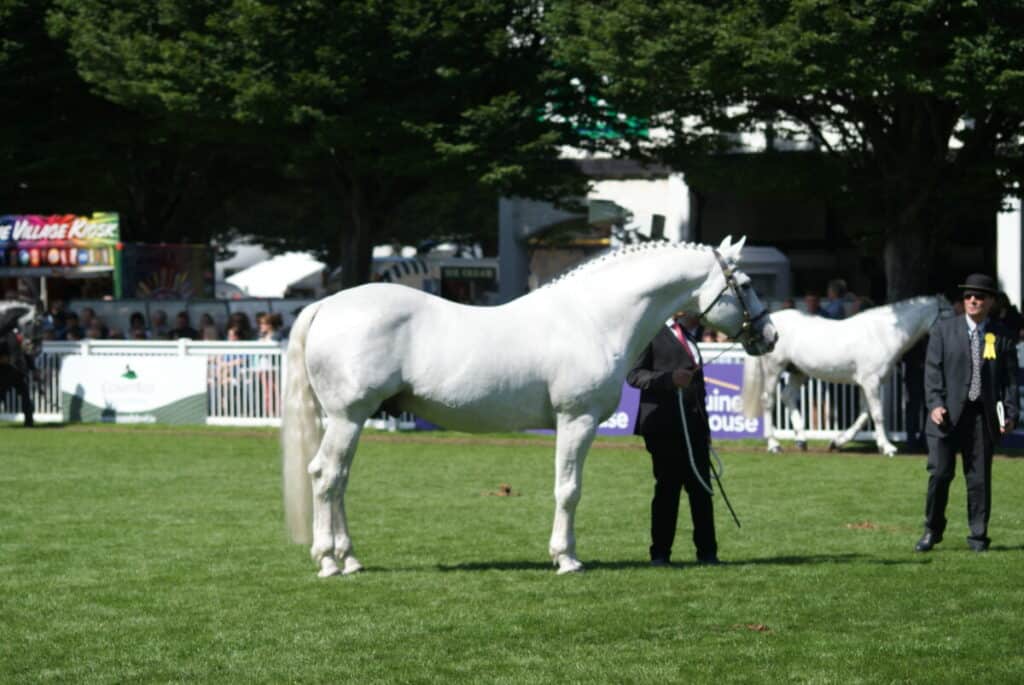
The History of The Breed.
As previously mentioned The Irish Draught was originally bred to be used on the farm and to be ridden. It was developed from the Irish Hobby in the 12th Century which was crossed with Anglo Norman War Horses. Around the 16th Century would see the introduction of the Iberian Horses which were said to have arrived in Ireland during the time of the Spanish Armada.
Later on the introduction of Clydesdale would give rise to a stronger heavier type of draught. However, if was found that this crossing delivered a horse with little stamina or athleticism, the breed is said to have then been improved with the introduction of the Thoroughbred. While the Native Connemara Pony is also present in its Bloodlines. The Irish Draught Breed therefore owes its lineage to this catalogue of crossing, producing a Draught Breed with Stamina, Strength and Athleticism, that was resilient and easy to maintain year round.
The Irish Draught Stud Book
Documentation of the Bloodlines of the Irish Draught started at the beginning of the 20th Century, when the Irish Government became involved in an effort to produce better horses. In 1907 the Registration of Irish Draught Stallions began, this was followed a few years later in 1911 with the Registration of Mares. The Irish Draught Stud Book was set up in 1917 by the Ministry of Agriculture. The original Stud Book had 44 Stallions with 375 Mares, these animals formed the foundation of the breed. Unfortunately in 1922, a fire in the Four Courts, saw much of original records destroyed.
A Decline in Numbers
There was a huge Decline in Numbers of the Irish Draught following the use and loss of horses in World War 1, along with the Industrial Revolution. This saw the Irish Draught horse numbers dwindle as many farm/work animals were slaughtered and replaced with tractors on the farm and machinery elsewhere. Along with this, many horses were exported for the use in other breeds. This left the Irish Draught Breed in a crisis state.
Preserving the Breed.
It was later in the 20th Century in an effort to preserve the Breed, that The Irish Draught Horse Society was founded in 1976. This was reformed in 2008 as the Irish Draught Breeders Association. As the breed has become more popular internationally there are a number of Irish Draught Societies around the Globe. The Societies from Ireland, the UK and Canada in 2011 & 2012 decided to come together and unify their breed selection and inspection Criteria in a effort to conform to a specific breed standard.
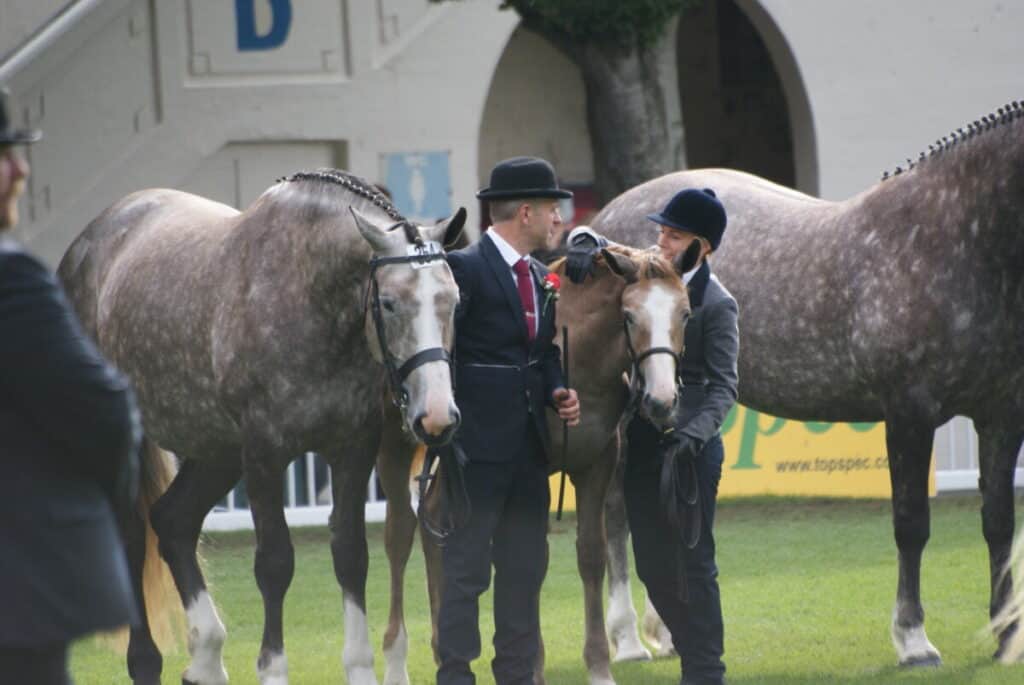
However, The Irish Draught is now hit a crisis point, and is once again on the Endangered List. This is due to the breed being used in various crossings to produce sport horses. This has seen many Irish Draught Mares being used with TB or WB stallions to produce competition horses. The draught mares are sought after for their Substance, Temperament, Soundness, and Jump which they pass on to their offspring.
Characteristics.
The Irish Draught is often described as having a kind nature, being calm and quiet with an easy going temperament. They are strong and usually stand anywhere from 15.2 hands up to 17hands. They are broad, with a well sprung rib cage and are athletic with plenty of jump. They have an attractive head with good width between the eyes and the jaw and a well developed neck with good length. They have short cannon bones with a good active stride, and straight movement. The calm and easy going nature of the Irish Draught, make them a great family horse or a first horse. They come in a variety of colours, normally Grey, Chestnut, Bay, Brown and Dun and when it comes to white markings, any that stretch above the knee or hock are frowned upon.
How the Irish Draught is now Classified.
The Irish Draught is now classified in 4 Classes, this to make it easy when choosing an animal for breeding purposes.
Class 1 – These animals have passed both Veterinary Examination and The Breed Standards.
Class 2 – These animals have passed the Veterinary Examination, but have not met the Breed Standard. Their offspring can be upgraded to Class 1.
Class 3 – These animals have failed the Veterinary Examination and are not eligible for breeding.
Class 4 – These animals have not yet been examined.
The Irish Draught in Sport.
Nowadays the Irish Draught is seen in many sports from Showjumping, Eventing, Dressage, to Hunting and indeed in all Riding Club activities. There are now also more Showing Classes available for the breed, along with Working Hunter Classes which they particularly excel at. Let’s take a peek at some of the excellent Irish Draughts that have played a huge role in Equestrian Sport.
King of Diamonds.
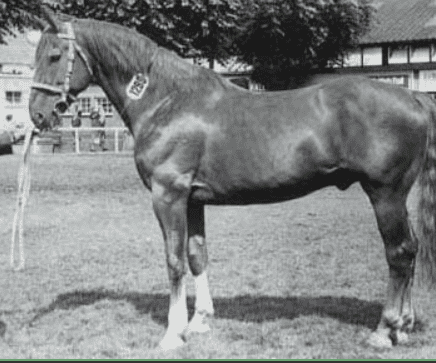
This is certainly a name from my youth, as if you wanted to buy a horse with a good jump in the 70’s and 80’s in Ireland, if the horse was by King of Diamonds, the chances are it would be able to jump! This Chestnut stallion was foaled in 1962 and he became one of the cornerstones in Irish Sport Horse Breeding. After his death in 1991 he ranked at 21st in the World Breeding Rankings from 1992 to 2001 for Showjumping horses, while also siring more than 40 approved Stallions.
Clover Hill
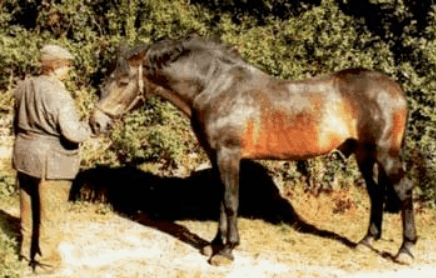
Clover Hill was foaled in 1973, and although he was by a thoroughbred Golden Beaker he was included in the Irish Draught Register. He was a 17hh bay and heavy set, obviously taking after his draught mother. He sired 1,730 registered foals during his lifetime, and has possibly been one of the most influential sires of Modern Sport Horse bloodlines. From 2001 to 2002 he ranked 4th in the WBFSH showjumping rankings, with a whopping 39 of his offspring jumping at International Level.
Pride of Shaunlara
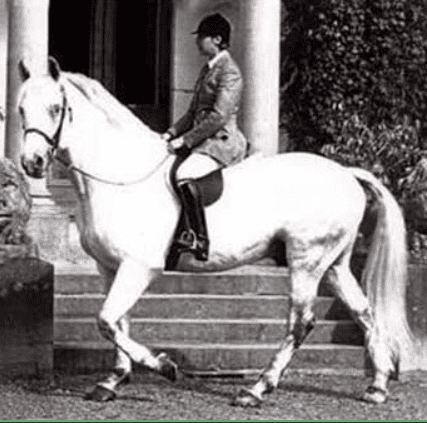
This Grey Irish Draught was foaled in 1969. His bloodlines can be found in many of the Irish Draughts of the Modern era. He sired many Irish Draught Stallions such as; Pride of Toames, Finbar and Suma’s Murphy’s Law, to name a few.
Sea Crest.
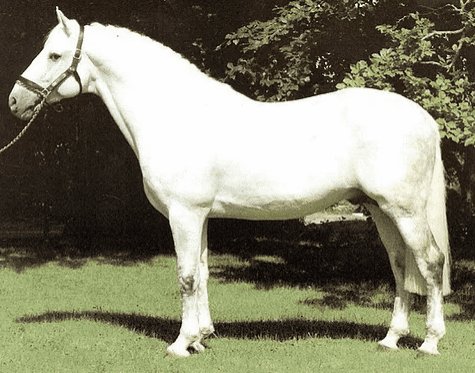
Sea Crest was foaled in 1979 and was the Sire of the hugely successful Irish Sport Horse Stallion Cruising. He Showjumped to Grade A, while 25 of his progeny went on to Jump or Event at International Level, including Hoochi Koochi who was on the Spanish Team at the Atlanta Olympics, and Nires Crest who was Scandinavian Champion. Interestingly enough his bloodlines go back to Arctic Que on his sire’s side. Arctic Cue, who was sired by Arctic Storm a Champion steeplechaser and the Sire of Golden Beaker, who indeed was the sire of the wonderful Sire Clover Hill.
Crosstown Dancer.
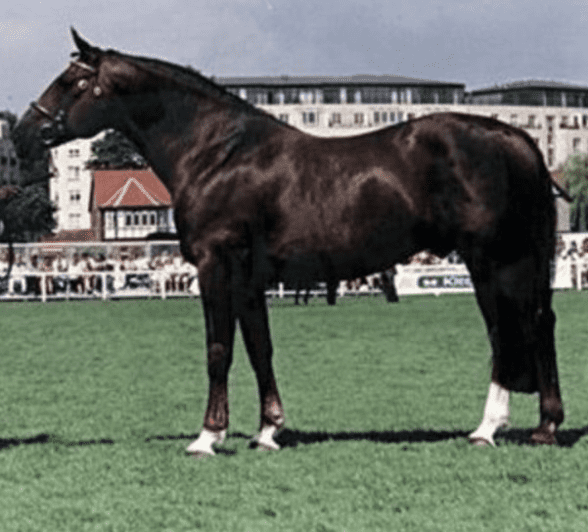
This athletic chestnut Irish Draught Stallion was Foaled in 1990. He enjoyed much success in Showing, Showjumping and Dressage Arenas. With his lineage going back to King of Diamonds on his Sires side and Pride of Shaunlara on his dam’s side it is easy to see why he and his offspring have enjoyed huge successes in Equestrian Sport.
Gortfree Lakeside Lad.
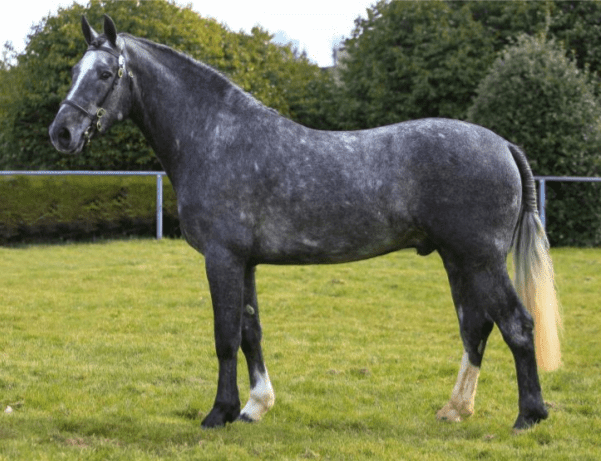
The last draught we have included is one of my favourites of the modern era. He is a relatively young stallion, foaled in 2012, his bloodlines go back to King of Diamonds on his Sire’s Side, and the wonderful Pride of Shaunlara on his Dam’s Side. Therefore, it’s easy to see why this Stallion is not only good looking but has a wonderful athletic jump as well. He won the working hunter Championship at Dublin Horse Show 2 years running, and also the Working Hunter Championship at the Irish Draught Show in 2018, plus he is competing successfully in Showjumping competitions. He is multi talented young stallion and is said to have a wonderful temperament as well, definitely an Irish Draught Sire to keep in your sights for future breeding.
In Conclusion, we believe it is important to preserve The Irish Draught Breed, this breed has been our partner in War, and Agriculture and now Sport. By preserving this breed we are preserving part of Ireland’s History.
This Article was originally published in the December 2020 Issue of Irish Sport Horse Magazine, All Pictures have been Credited to the Individual Photographer or Websites.
